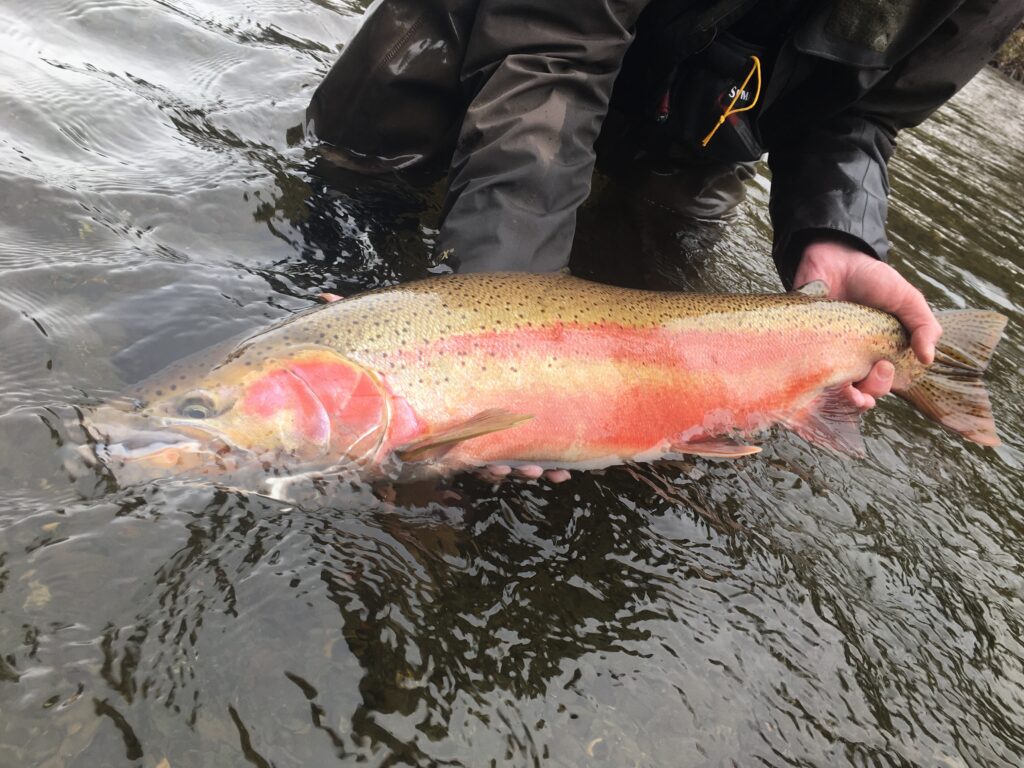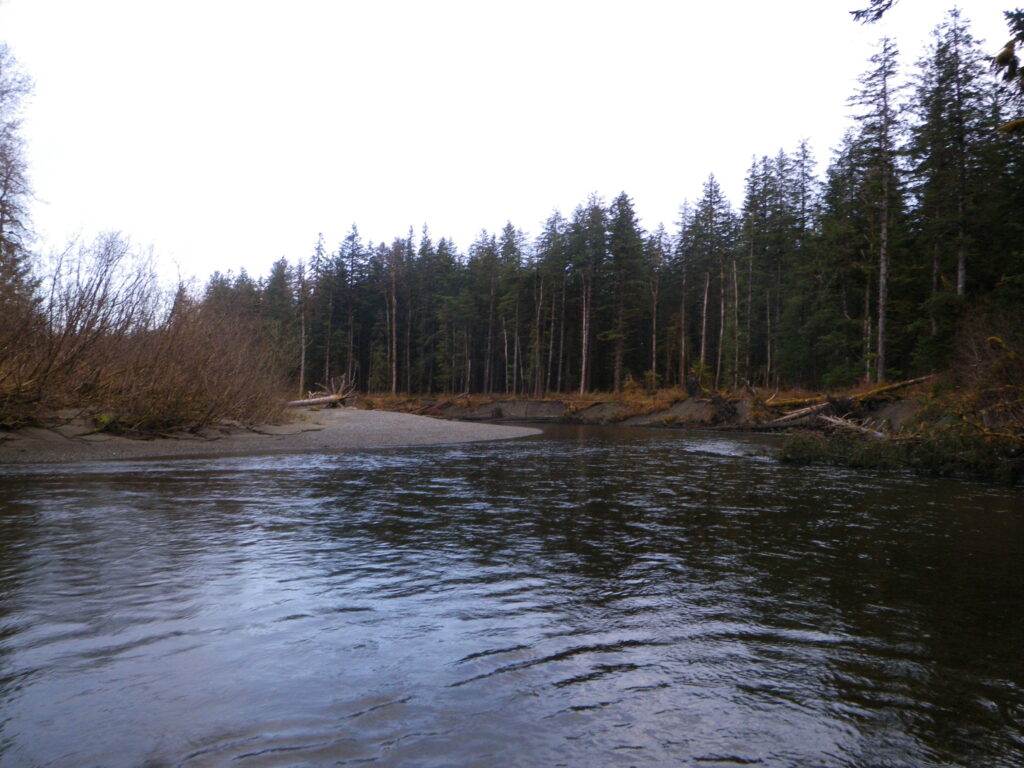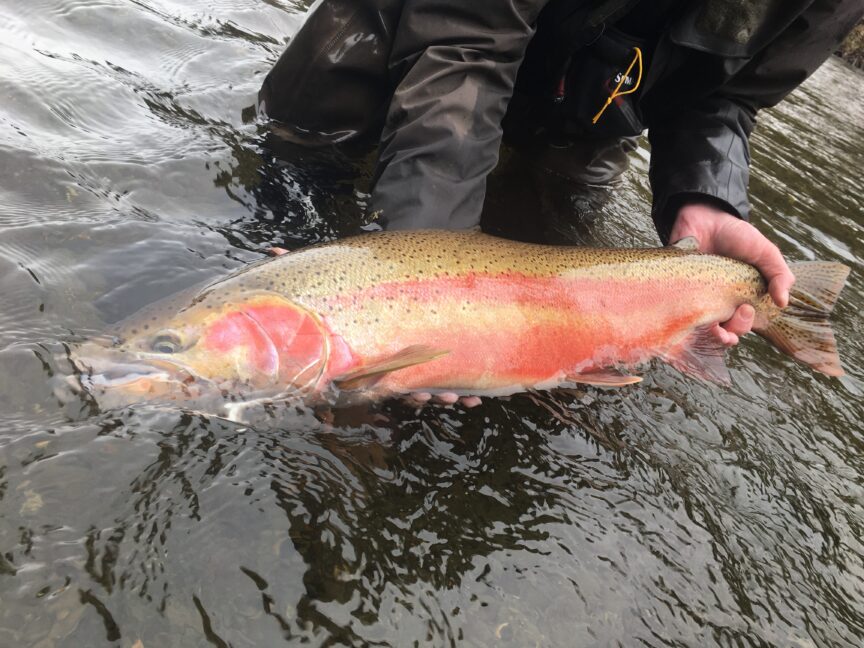
The fate and migratory oceanic patterns of steelhead kelts from the Situk River, Alaska
The ability to spawn more than once is one of the defining traits the separates steelhead from the five species of Pacific Salmon. This ability to spawn multiple times provides steelhead with increased resiliency to changing environmental conditions, as well as a greater overall lifetime reproductive output than fish that only spawn once. Steelhead that have successfully spawned and head back out to sea are referred to as “kelts” and this important life stage of steelhead tends to be challenging to study. With repeat spawner rates declining across the native range, it is fundamental for us to better understand the ocean ecology of kelts and the sources of mortality impacting them in the ocean.
Southeast Alaska’s Situk River in Alaska represents one of the few places where fisheries biologists are regularly able to get their hands on kelts, with 3,000 to 15,000 passing downstream through a weir on the river annually. Capitalizing on this, a recent study by Courtney et al. (2022) sought to track movement patterns of kelts in the Pacific to better understand their behavior.
Between 2018 and 2020, these researchers opportunistically tagged 63 steelhead kelts with pop-up satellite tags to better understand their behaviors in the ocean. The tags were active between June and January each year. While at sea, the tags tracked the movement, depth and temperatures experienced by the kelts before popping off the fish and transmitting the gathered data to a satellite. What they found was quite interesting.
Steelhead Kelts Across in the open ocean
Kelts in the Pacific traveled much greater distances than anticipated, covering distances of up to 2,360 miles. By the end of the study period, this placed many of the kelts off the western end of the Aleutian Islands near the Kamchatka Peninsula. Additionally, one fish traveled north into the Bering Sea where it spent the winter, behavior that had not been observed previously in steelhead.

Above: Alaska’s Situk River. Image: Gary Marston
While at sea, kelts utilized a narrow range of temperatures and depths. Generally, they were surface oriented and traveled in the top 16’ (5m) of the water column with only occasional dives to 50’ to 65’ (15m to 20 m) of depth. Additionally, the kelts spent 99.9% of their time in waters that were from 41 °F to 59 °F.
Kelts documented experienced very high mortality rates in the ocean. 68% of the fish died at sea over the course of the study. While the source of mortality was unknown for the majority of the kelts, 10 tags could be linked directly to predation events.80% of these predators were cold-blooded and were most likely either Salmon Sharks or Blue Sharks, while the remaining 20% were believed to be Seals or Sea Lions.
Implications for steelhead management in the face of climate change
Steelhead continue to face significant challenges both in freshwater and in the marine environment and as such managers need to consider all aspects of steelhead life history to support their resilience to climate change. This research supports the need for forecasting tools that take the life history diversity as well as the unique ocean ecology of steelhead into account to help managers adapt to changing environmental conditions. This research supports other literature that indicates how steelhead, which are far traveled and surface-oriented, utilize the ocean differently than other species of Pacific Salmon. With marine heat waves rapidly becoming the new normal in the North Pacific, negatively impacting the survival of every life stage of steelhead up and down the coast, repeat spawners are an essential life history component to allow steelhead to adapt to changing conditions. As such, managers need to understand the behavior and sources of mortality for all life stages and utilize this information in their forecasting.
With the low survival of kelts in the ocean indicated by this study, managers also need to focus additional efforts on actions in freshwater to maximize the survival of kelts in this stage of life and improve repeat spawning rates. Such actions are going to be essential as the amount of suitable habitat for steelhead in the North Pacific continues to shrink in the face of climate change.


